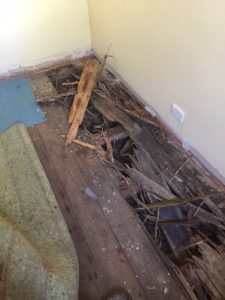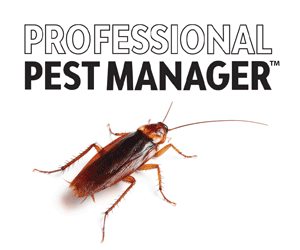Being attentive during inspections is key, as this edition of Termites in Action proves.
Checking the obvious during termite inspections can sometimes be overlooked as pest inspectors switch into ‘auto mode’. Here are some examples demonstrating why it’s important to be thorough and assume nothing during each and every inspection.
Pull back the carpet
Craig Kramer from Eagle Eye Termite and Pest Control was called to a property in Molong (NSW) where the tenant was concerned about the bouncing and spongy carpet. “Apparently previous inspections had put it down to moisture because the bearers and floorboards were basically on the dirt. This is what we found when we pulled back the carpet.” Moral of the story – read previous inspection reports from other companies (if available), but don’t necessarily trust them.

Termites in trees
Not normally noteworthy to have photos of termite activity in trees, but Aidan Wells from Pest Free Solutions in Taree (NSW) spotted this Coptotermes activity during an inspection. It looks like a drill hole, but it was already there prior to the inspection and went upwards. Very helpful for the termites to show themselves, but demonstrates the importance of checking trees on the property during an inspection.

And for those who haven’t seen Mastotermes in a while, here’s a shot sent in by Michael McDonald from Permkil in central Queensland. Mastotermes can pack out the trunks of trees and palms in such numbers when you break the trunk open they actually pour out, like a liquid. Their soldiers are capable of drawing blood – apparently you cannot call yourself a termite researcher until you’ve been bitten by Mastotermes!

Hot termite activity in the cold room
Marshall Blacklock from CDI Pest Management uncovered this large Coptotermes nest in a farm packing shed behind a coldroom. “The shed itself was built from bush timber posts and main bearers, with a dirt floor. There was approximately 500mm between the coldroom and shed wall and this was packed with mud. At the base it was about 1.5m wide and about 2m high. Treatment involved injection of 50 litres of Altriset directly into the post. No liquid ran out.”





